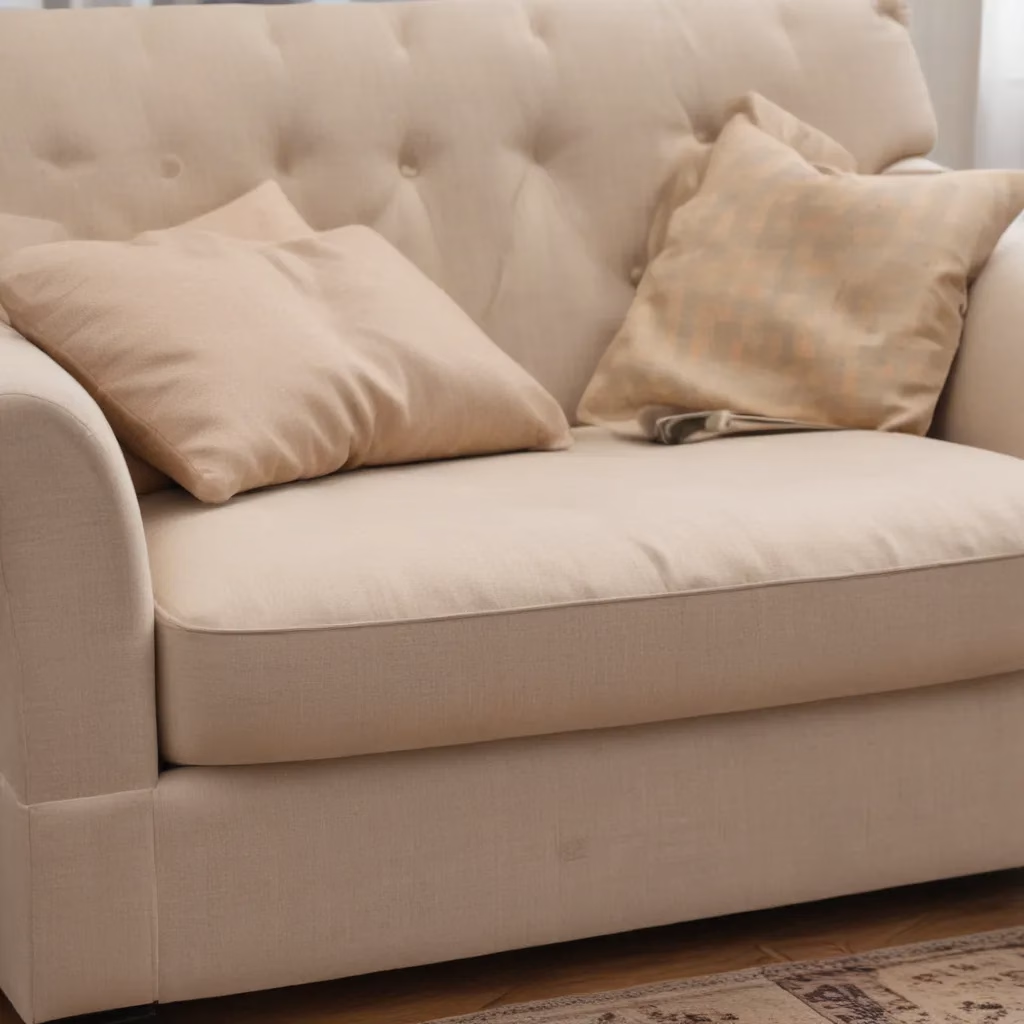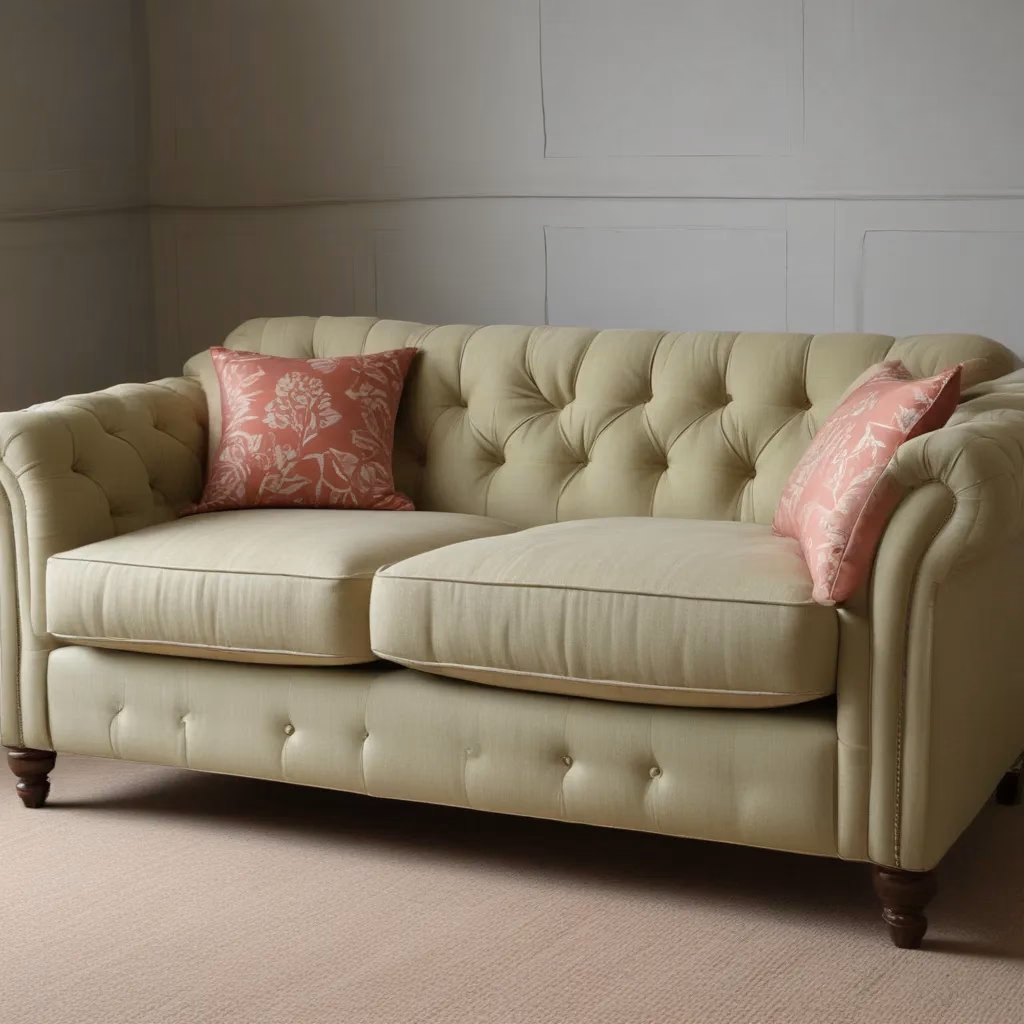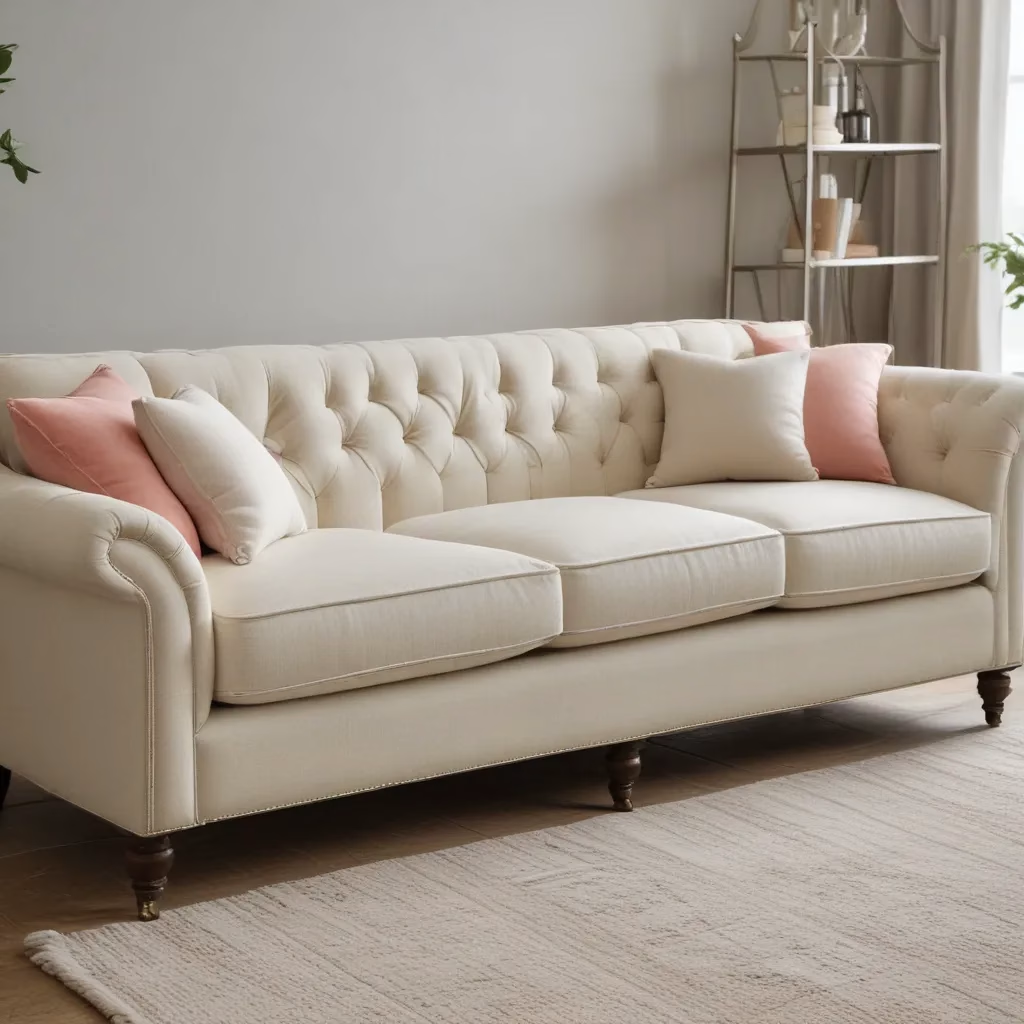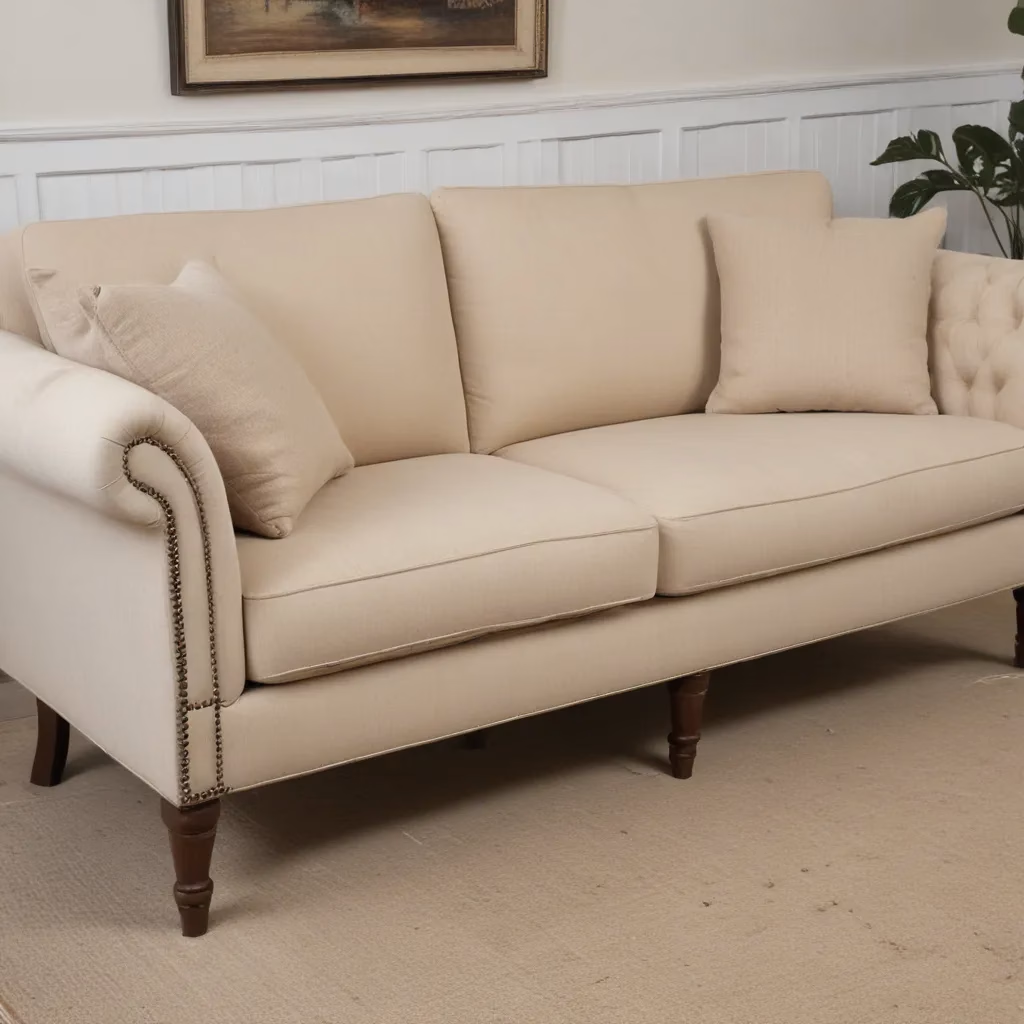
As an experienced furniture consultant and interior design writer, I understand the importance of keeping your fabric furnishings looking their best. From sofas and armchairs to curtains and throw pillows, the fabrics in your living space are not only a big investment, but they also set the tone for the overall aesthetic. In this comprehensive guide, I’ll share my top tips for troubleshooting and maintaining fabric furnishings, so you can enjoy a stylish and comfortable home for years to come.
Fabric and Upholstery Selection
The first step in ensuring the longevity and beauty of your fabric furnishings is to carefully consider the materials you choose. Fabric type plays a crucial role, as different fibers have unique properties that affect durability, stain resistance, and overall appearance.
Natural fabrics like cotton, linen, and wool are classic choices that can add warmth and texture to a space. They’re generally easy to clean and tend to age gracefully. However, they may be more susceptible to fading, pilling, or staining over time.
Synthetic fabrics like polyester, microfiber, and olefin are often more durable and stain-resistant. They’re also typically easier to maintain, making them a practical option for high-traffic areas or homes with pets and children. That said, they may not have the same luxurious feel or timeless appeal as natural fibers.
When it comes to upholstery, factors like fabric weight, weave, and finish can significantly impact the overall look and lifespan of your furniture. Tightly woven fabrics, such as tweed or velvet, tend to be more resistant to wear and tear, while lighter, more delicate textiles may require more diligent care.
The color and pattern you choose for your fabric furnishings can also affect their longevity. Solid, neutral tones are generally the easiest to maintain, as they don’t show dirt and stains as readily as bold, patterned fabrics. If you do opt for a vibrant or patterned textile, consider choosing one with a stain-resistant finish or treatment to help keep it looking its best.
Living Room Layout Tips
Once you’ve selected the perfect fabric furnishings for your space, it’s time to think about how to arrange them for maximum comfort and visual appeal. When it comes to sofa placement, consider the room’s dimensions and traffic flow. Positioning your sofa perpendicular to the main entryway or arranging it in a conversation-friendly U-shape can create a cozy, intimate atmosphere.
Balancing aesthetics and functionality is key when arranging your living room. double-check that there’s ample space for people to move around freely, while also considering the placement of side tables, ottomans, and other accent pieces. Grouping your fabric furnishings in a visually harmonious way can enhance the overall feel of the room.
Remember, the arrangement of your fabric furnishings can also impact their longevity. Avoid placing sofas or armchairs in direct sunlight, as this can cause fabrics to fade prematurely. Similarly, be mindful of high-traffic areas, and consider using rugs or other protective measures to prevent excessive wear and tear.
Sofa Cleaning & Maintenance
Proper cleaning and maintenance are essential for keeping your fabric furnishings looking their best. Upholstery cleaning methods can vary depending on the fabric type, so it’s important to follow the manufacturer’s instructions carefully.
For general cleaning, a gentle vacuum with a soft-bristle attachment can help remove surface dirt and debris. When dealing with spot cleaning, blot the affected area with a clean, damp cloth, and avoid rubbing, which can spread the stain. For more stubborn stains, use a mild, fabric-safe cleaner and test it in an inconspicuous area first.
To protect your fabric furnishings and extend their lifespan, consider using a fabric protector or stain-resistant treatment. These products can help repel liquids and make it easier to remove spills before they set in. Regularly fluffing and rotating cushions can also help evenly distribute wear and prevent premature sagging.
If you’re dealing with more extensive damage or odors, it may be worth considering professional upholstery cleaning services. These experts have the knowledge and equipment to safely and effectively restore your fabric furnishings to their former glory.
Styling for Comfort & Aesthetics
Once you’ve got the basics of fabric maintenance down, it’s time to start thinking about how to style your living space for both comfort and visual appeal. Accessorizing with throw pillows and blankets is an easy way to add a personal touch and extra coziness to your fabric furnishings.
When choosing these accents, consider how they’ll complement the existing colors, patterns, and textures in the room. Layering different fabrics and materials can create a visually interesting and tactile experience.
Lighting is another important element in achieving the perfect balance of comfort and style. Soft, indirect lighting from table lamps or floor lamps can help create a warm, inviting atmosphere, while strategically placed task lighting can illuminate specific areas for reading or entertaining.
Don’t forget about the role of textural elements in your living room design. Mixing fabrics with different weights, weaves, and finishes can add depth and visual interest to your space. For example, pairing a plush velvet sofa with a sleek, glazed ceramic table lamp can result in a stunning and cohesive look.
Furniture Buying Guides
When it comes to investing in new fabric furnishings, it’s essential to do your research and understand the key factors that contribute to quality and longevity. Sofa sizing and dimensions are crucial considerations, as you’ll want to double-check that the piece fits comfortably in your living space without overwhelming the room.
Evaluating the overall construction and craftsmanship of a piece of furniture is also important. Look for sturdy frames, high-density foam cushions, and well-made upholstery that can withstand regular use. While cost is certainly a factor, remember that quality furniture is a long-term investment, and it’s often worth spending a little more for pieces that will stand the test of time.
Customizing Fabric Furnishings
If you’re looking to breathe new life into your existing fabric furnishings, consider exploring reupholstering or slipcover options. Reupholstering involves completely replacing the fabric on a piece of furniture, allowing you to choose a fresh new look that perfectly suits your style and needs.
For a more budget-friendly alternative, slipcovers can be a great way to update the appearance of your sofa, chair, or loveseat without the full commitment of reupholstery. These removable covers come in a wide range of fabrics and can be easily swapped out as your design preferences evolve.
If you’re feeling creative, DIY fabric projects like throw pillow covers, curtains, or even small-scale upholstery can be a fun and rewarding way to personalize your living space. Just be sure to carefully consider the fabric’s properties and your own skill level before tackling any DIY projects.
For those who prefer a professional touch, there are upholstery services available that can handle everything from minor repairs to complete furniture makeovers. These experts have the knowledge and tools to double-check that your fabric furnishings are restored to their former glory.
Trends in Living Room Design
As you plan your fabric furnishing purchases and maintenance, it’s also helpful to stay up-to-date on the latest trends in living room design. Contemporary sofa styles like sleek, low-profile silhouettes or modular sectionals are increasingly popular, offering a modern and versatile look.
Eco-conscious consumers are also driving a growing demand for sustainable and environmentally friendly furniture options. This includes fabrics made from recycled or natural materials, as well as furniture constructed with responsibly sourced, renewable resources.
Another emerging trend is the mixing of vintage and modern elements. By pairing a classic, tufted sofa with streamlined, contemporary accent pieces, you can create a visually striking and layered look that reflects your personal style.
Caring for Delicate Fabrics
While most fabric furnishings can be maintained with relative ease, some more delicate textiles require a bit more TLC. Velvet and chenille, for example, are luxurious and cozy options, but they can be prone to crushed pile or matting if not properly cared for.
Regular vacuuming with a soft-bristle attachment, along with the occasional steaming or light brushing, can help preserve the plush, velvety appearance of these fabrics. Avoid over-cleaning or using harsh chemicals, as this can damage the fibers.
Leather and suede furnishings also require specialized care. Routine dusting, conditioning, and spot-cleaning are essential to keep these materials supple and looking their best. For any significant damage or discoloration, it’s best to consult a professional leather repair specialist.
When dealing with fragile textiles, such as antique lace or delicate embroidery, extreme caution is required. Consult with a textile conservator or upholstery expert to double-check that these precious items are handled with the utmost care and respect.
By following these troubleshooting tips and maintaining a proactive approach to fabric furnishing care, you can keep your living space looking beautiful and inviting for years to come. For more advice on sofa selection, layout, and décor, be sure to visit SofaSpectacular.co.uk, where our team of experts is always ready to help you create the perfect living room oasis.
Tip: Rotate cushions regularly to maintain even wear



